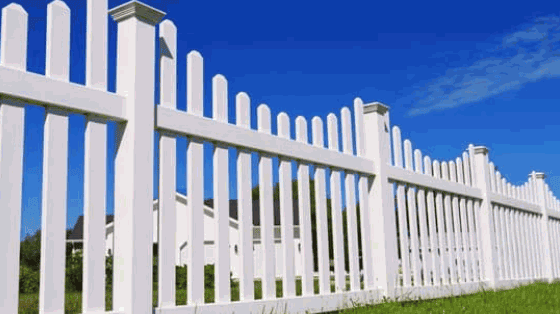
In this comprehensive guide, we will delve into the world of homemade fences: what they are, why you should consider building one, the materials and tools you'll need, and a step-by-step process for creating your own customized fence.
Building a homemade fence comes with numerous benefits, including:
- cost-effectiveness
- customizability
- eco-friendliness
We'll explore these advantages and equip you with the essential knowledge to embark on your DIY fence project. Whether you're a seasoned DIY enthusiast or a novice looking to enhance your property, this article will provide you with the insights and practical guidance needed to successfully build a homemade fence.
Uncover more: How To Install A Small Garden Fence
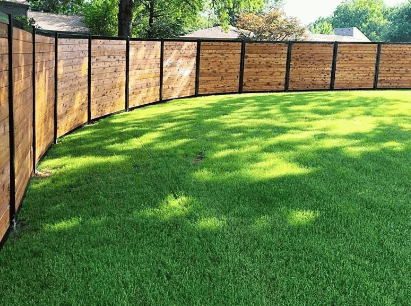
What Is A Homemade Fence?
Table of Contents
These homemade fences, often constructed using readily available materials such as wood, metal, or PVC, offer budget-friendly solutions for defining outdoor spaces. They can be customized to fit any design aesthetic, from rustic to modern, and can easily be adapted to accommodate different heights and styles. Building a homemade fence requires careful planning, accurate measurements, and basic carpentry skills. The sense of accomplishment and the cost savings make it a popular choice for homeowners looking to enhance their outdoor living space.
Why Make A Homemade Fence?
Creating a homemade fence offers several compelling advantages, making it an appealing choice for property owners looking to enhance their outdoor spaces in a cost-effective, customizable, and eco-friendly manner.
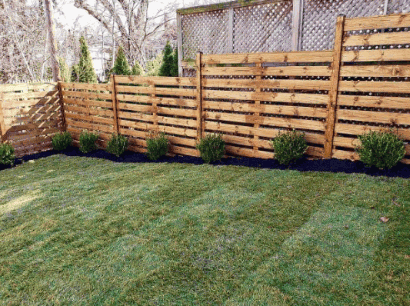
Cost-effective
One of the primary reasons to opt for a homemade fence is its cost-effectiveness, allowing property owners to achieve their fencing goals without incurring exorbitant expenses.
This approach to creating a fence can significantly reduce the overall project cost, as it eliminates labor fees associated with professional installation. By utilizing readily available materials and simple construction techniques, homeowners have the opportunity to save a substantial amount of money. The affordability of DIY fencing empowers individuals to customize the design, size, and style of their fences to suit their specific preferences and property layout, adding further value and personalization to their homes."
Customizable
Homemade fences offer a high degree of customization, enabling property owners to tailor the design, materials, and aesthetics according to their specific preferences and requirements.
This level of flexibility allows individuals to create a fence that complements the overall style and architecture of their home. With a wide range of material options such as wood, vinyl, metal, or composite, homeowners can select the most suitable option based on factors like durability, cost, and maintenance requirements.
The customizable nature of homemade fences enables property owners to incorporate unique features, such as decorative elements, personalized carvings, or integrated lighting, which can enhance the overall aesthetic appeal of the property.
Eco-Friendly
Building a homemade fence is a sustainable choice that aligns with eco-friendly practices, as it allows property owners to utilize environmentally conscious materials and construction methods.
By opting for sustainable materials such as reclaimed wood, bamboo, or recycled composite materials, DIY enthusiasts can reduce the environmental impact associated with traditional fence construction. Implementing eco-conscious building techniques like rainwater harvesting, using natural finishes, and incorporating native plantings along the fence line further enhances the environmental benefits of homemade fences.
This eco-friendly approach not only fosters a greener living environment but also promotes a deeper connection to nature and outdoor sustainability.
What Materials Are Needed For A Homemade Fence?
The materials required for a homemade fence can vary but commonly include options such as:
- Wood, which is a timeless choice for traditional, rustic, or natural-looking fences, provides a warm, classic appearance and excellent versatility for various designs.
- Metal, offers exceptional strength and security, making it suitable for more industrial or modern fence styles.
- PVC, known for its low maintenance and resistance to rot and pests, is ideal for contemporary or decorative fencing that requires minimal upkeep.
Wood
Wood is a popular choice for homemade fences due to its natural appeal, versatility in design, and ease of construction, making it a preferred material for creating charming and functional fence structures.
The aesthetic qualities of wood blend seamlessly with various architectural styles, offering a timeless and inviting look to any property. Its versatility allows for customization, enabling the construction of fences in diverse heights and designs, ranging from classic picket fences to modern horizontal slat fences. The natural variations in wood grain and color provide unique character to each fence, enhancing the overall visual appeal of the property.
Not only does wood offer design flexibility, but it also serves as a sustainable and eco-friendly option for property boundary demarcation, further adding to its appeal.
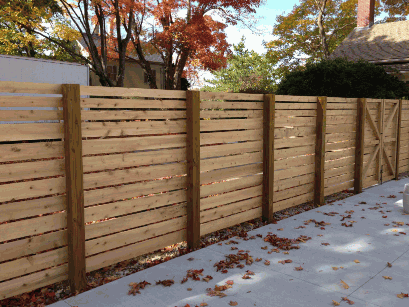
Metal
Metal fences offer robustness and security, making them an excellent choice for property protection and boundary delineation, and their installation involves precise techniques to ensure durability and functionality.
The sturdy construction of metal fences provides a formidable deterrent to unauthorized entry, enhancing the security of your outdoor spaces. Metal fences can withstand harsh weather conditions, ensuring long-term reliability. Their low maintenance requirements make them a cost-effective solution for property owners.
With proper installation, these fences can significantly enhance the aesthetic appeal of your property while providing a sense of security and privacy. They are versatile and can be customized to complement various architectural styles, adding value to your property.
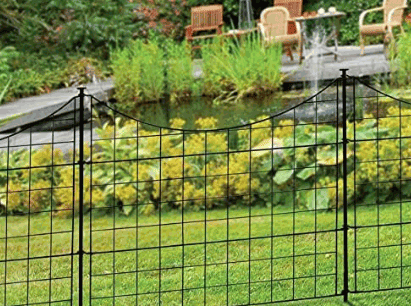
PVC
PVC fences are low-maintenance and offer a sleek modern aesthetic, with their pre-fabricated panels simplifying the homemade fence construction process and minimizing ongoing maintenance needs.
These DIY PVC fence panels are a popular choice for homeowners looking to enhance the privacy and security of their outdoor spaces. The durable nature of PVC makes it resistant to rot, rust, and insect damage, ensuring that the fence maintains its integrity for years to come.
With easy cleaning and minimal upkeep required, DIY PVC fences provide a cost-effective and visually appealing solution for long-term property enhancement.
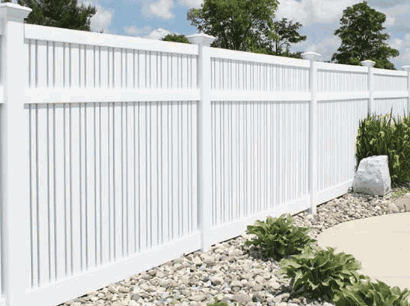
What Tools Are Needed To Build A Homemade Fence?
The construction of a homemade fence requires a range of tools, including both hand tools and power tools, to facilitate the various tasks involved such as measuring, cutting, digging, and securing, while maintaining proper safety precautions throughout the process.
Hand tools such as a hammer, tape measure, level, and post hole digger are essential for accurate measurements, precise cuts, and secure post installation. Power tools like a circular saw, drill, and nail gun speed up the process, making fence construction more efficient.
Prioritizing safety with personal protective equipment, such as goggles, gloves, and ear protection, is crucial to prevent accidents and ensure a successful DIY project.
How To Build A Homemade Fence?
The process of building a homemade fence involves several key steps, starting from planning and measuring to the installation of fence posts, panels, gates, and finishing touches such as staining and sealing, to ensure durability and aesthetics.
It's essential to begin by evaluating the layout of the property and marking the boundaries. Consider the type of material to be used - wood, vinyl, metal, or composite. Next, dig holes for the fence posts, ensuring they are evenly spaced and at the correct depth. Once the posts are in place, attach the panels, ensuring they are level and secure. Including gates in the design requires precise measurement and installation.
Protect the fence from weathering and decay by applying a suitable stain or sealant.
Plan And Measure
The initial phase of building a homemade fence involves meticulous planning and precise measurement, laying the foundation for a successful and well-aligned fence construction project.
It is essential to carefully consider the layout of the fence, taking into account the boundaries of the property, terrain, and any existing structures. Accurate material estimation plays a crucial role, ensuring that there are no shortages or wastage during the construction process.
Strategic measurements, such as post spacing and fence height, are pivotal in achieving a professional and aesthetically pleasing result. By adhering to these principles, DIY enthusiasts can embark on a fence project with confidence and precision, ultimately yielding a durable and attractive addition to their property.
Prepare The Materials
Preparing the materials for the homemade fence involves cutting, shaping, and organizing the components according to the planned design, ensuring efficient assembly and structural integrity of the fence.
This process requires careful attention to detail, particularly in the cutting techniques used to shape the materials. Precision cuts are crucial for achieving clean edges and seamless joints, contributing to the overall aesthetics and durability of the fence.
The organization of materials plays a key role in streamlining the assembly process, allowing for a systematic and efficient construction sequence. By prioritizing material readiness, DIY enthusiasts can ensure a smooth and productive fence-building experience.
Dig Post Holes
The proper installation of fence posts begins with digging precise and adequately spaced holes, laying the groundwork for the stability and longevity of the homemade fence structure.
Ensuring the correct depth of each hole is crucial, typically requiring a depth of at least one-third to one-half of the total above-ground height of the post. Maintaining consistent spacing between posts is essential for a uniform and visually appealing fence line.
Careful alignment of the holes is also necessary to ensure that the fence panels fit evenly and securely. DIY enthusiasts undertaking this task should use a post-hole digger or an auger for efficiency and accuracy, following recommended safety precautions throughout the process.
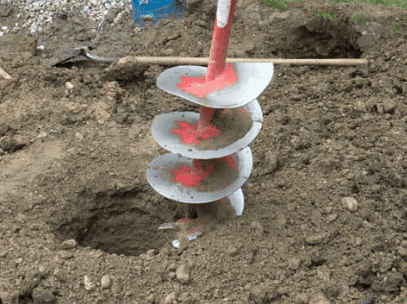
Set The Posts
Setting the fence posts accurately and aligning them properly is crucial for the structural integrity and uniformity of the homemade fence, ensuring a stable and visually appealing end result.
One crucial aspect of this process is ensuring that the posts are set at the correct distance and aligned in a straight line. In homemade projects, employing a string line or a level can help in achieving proper alignment. Bracing the posts during installation is also essential to prevent them from shifting before the concrete sets. Ensuring post stability is paramount to withstand external forces and maintain the fence's durability over time, making it a key factor in a successful DIY post setting.
Install The Fence Panels
Installing the fence panels involves securing them to the posts with precision and care, ensuring a seamless and sturdy integration that forms the main body of the homemade fence structure.
For attachment, many DIY enthusiasts opt for methods such as screws, nails, or brackets. It's important to consider panel alignment, ensuring uniform spacing and levelness across the entire fence. Reinforcing the structure with cross-bracing or diagonal supports can enhance its strength and durability.
By following these steps diligently, the fence panels can be installed effectively, contributing to a visually pleasing and functional addition to the outdoor space.
Secure The Fence Panels
Properly securing the fence panels to the posts requires the use of reliable fasteners and attachment mechanisms, ensuring the stability and resilience of the homemade fence against external forces and environmental conditions.
For DIY enthusiasts, selecting the appropriate fasteners and attachment methods can make a significant difference in the long-term performance of the fence. Options such as screws, nails, or specialized fence clips offer various benefits in terms of strength, ease of installation, and resistance to corrosion.
Proper spacing and alignment of the panels are crucial to prevent sagging and maintain a visually appealing fence. Considering these factors can result in a secure and durable fence that enhances the overall aesthetics and functionality of the property.
Add Finishing Touches
The final phase of building a homemade fence involves adding finishing touches such as staining and sealing, enhancing the aesthetics and durability of the structure while providing protection against the elements.
Applying a high-quality stain can not only improve the fence's appearance but also provide long-lasting protection against weathering. Sealing the wood after staining locks in the color and shields it from moisture, preventing rot and decay.
Incorporating decorative elements such as post caps, lattice panels, or hanging planters can elevate the visual appeal of the fence, adding a personalized touch to the finished project. These final touches are crucial for maintaining the longevity and attractiveness of the fence, contributing to the overall success of the DIY endeavor.